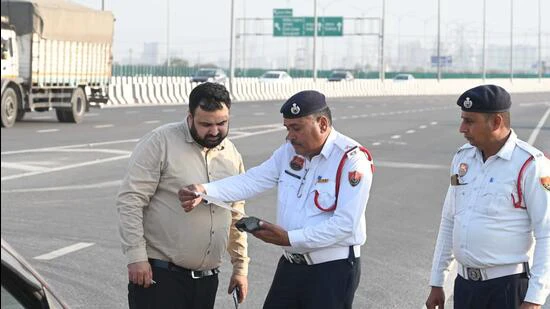The traffic police will soon start a sensitisation drive for its officials to instil a behavioural change among patrolling teams. The decision was announced on Friday after director general of police (DGP) OP Singh issued directives for “frictionless policing” in the city.
Dr Rajesh Mohan, deputy commissioner of police (DCP) (traffic), said that the police manpower will be sensitised to not unnecessarily stop commuters and to adopt proper, people-friendly patrolling practices. “Based on complaints received from commuters about officers behaving rudely during traffic checks, we have decided to start this initiative. Officers will now use polite phrases while enforcing traffic norms,” said DCP Mohan.
A senior traffic official said a meeting will be organised soon with all zonal officers, directing them to listen to commuters’ grievances patiently. “We want to ensure that on ground personnel act responsibly by being polite and firm at the same time.”
Earlier, DGP Singh spoke to DCP on Wednesday, directing him to adopt “Stanford Design Thinking Lab Method,” a five-stage process to understand “pain points” of motorists. “Since our forces would maintain composure during high-pressure situations on busy roads and junctions, we expect a similar behavior from residents and not to indulge in acts of misbehavior,” DCP Mohan said.
Adopted by law enforcement authorities globally, the Stanford Design Thinking Model emphasis on commuter-generated outputs by empathizing with them, instead of imposing policy decisions.
Officials added that through the model, commuters’ grievances about hasty lane changes, illegal parking, traffic snarls and overspeeding will be addressed. “Anyone who feels they want to contribute to improving the traffic conditions can write to us at [email protected],” DCP Mohan said.
Officials said Shankar Chowk’s decongestion phase one trial on October 9 was conducted using the principals adopted from Stanford Design Thinking Model- by listening to commuters driving past Delhi and heading towards Gurugram. “We will keep experimenting by forming smart traffic plans to ensure no congestion on sites with strong electronic enforcement,” DCP Mohan said.
Notably, there are 1200 CCTV, ANPR, and other forms of surveillance cameras placed at 208 locations across the city. “We have written to the Gurugram Metropolitan Development Authority (GMDA) and other urban local bodies to order maintenance of cameras where monitoring networks remain defunct,” DCP Mohan said.
